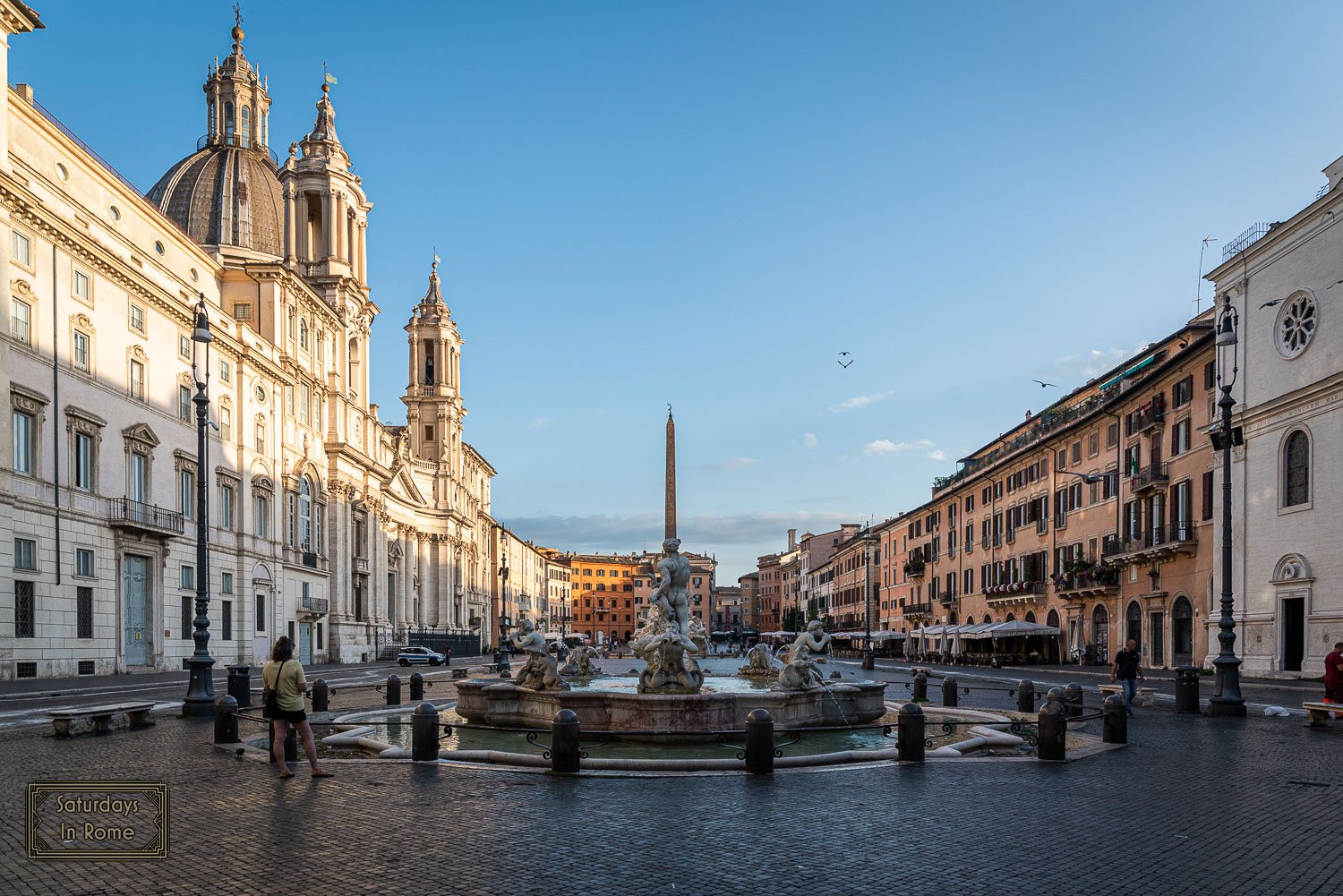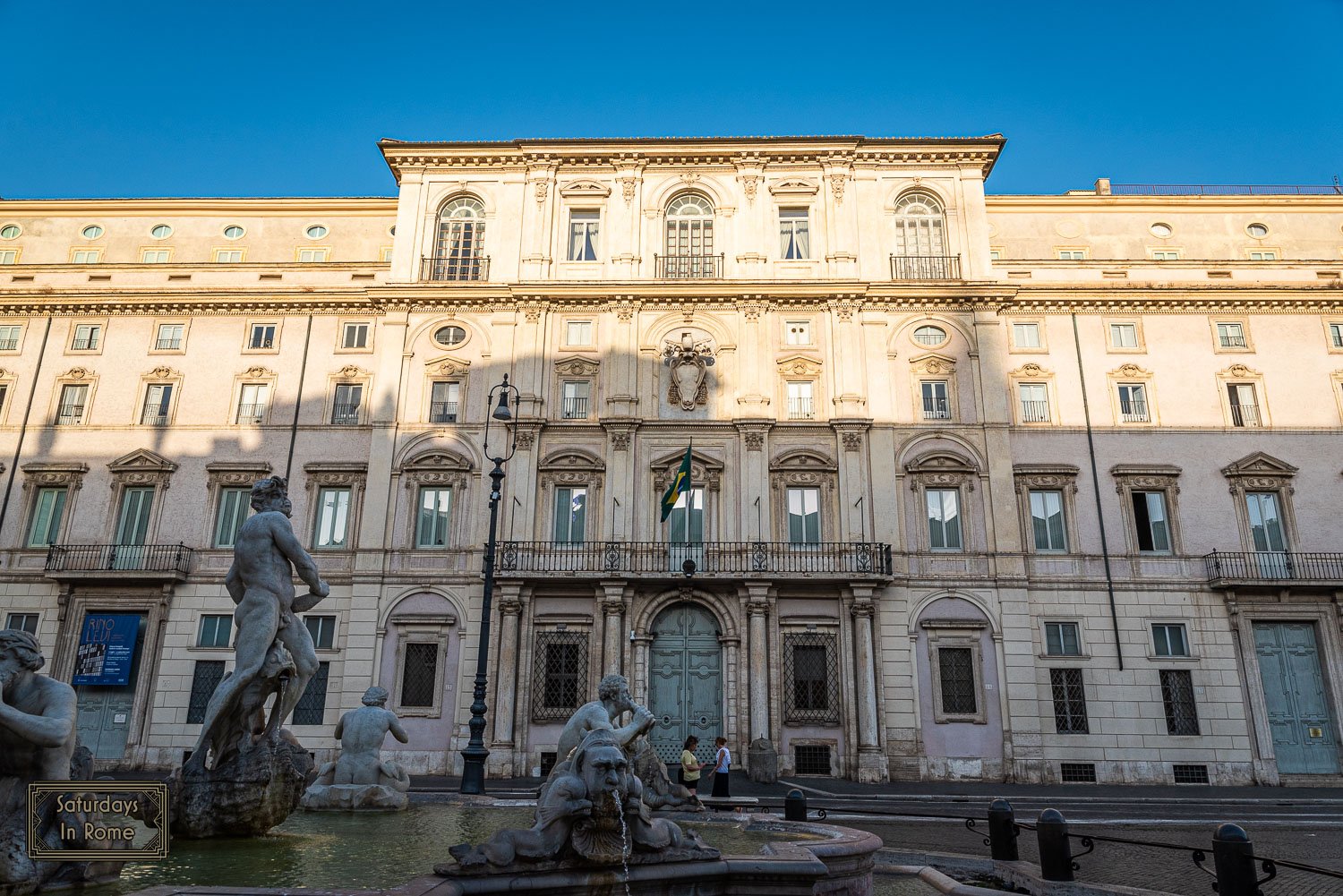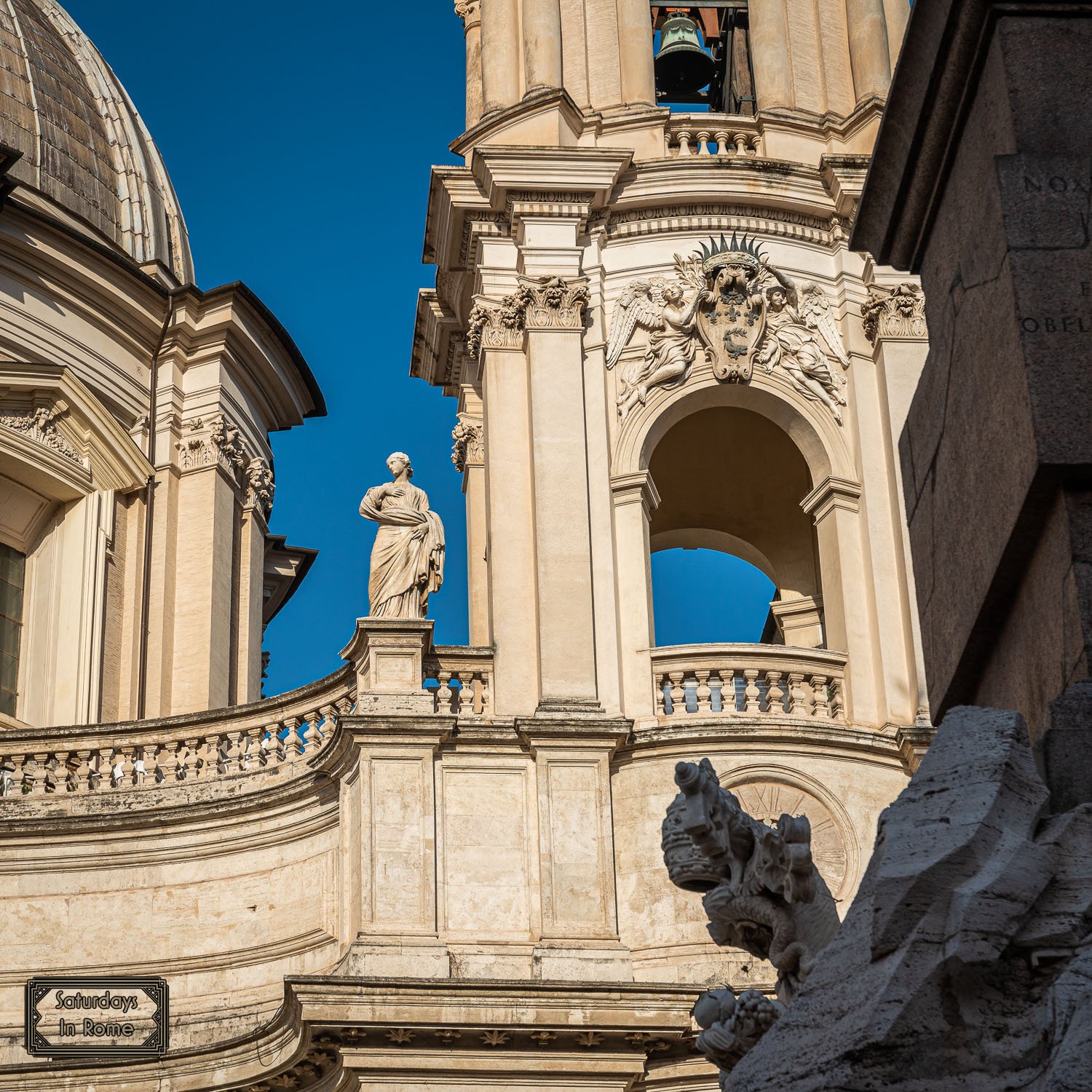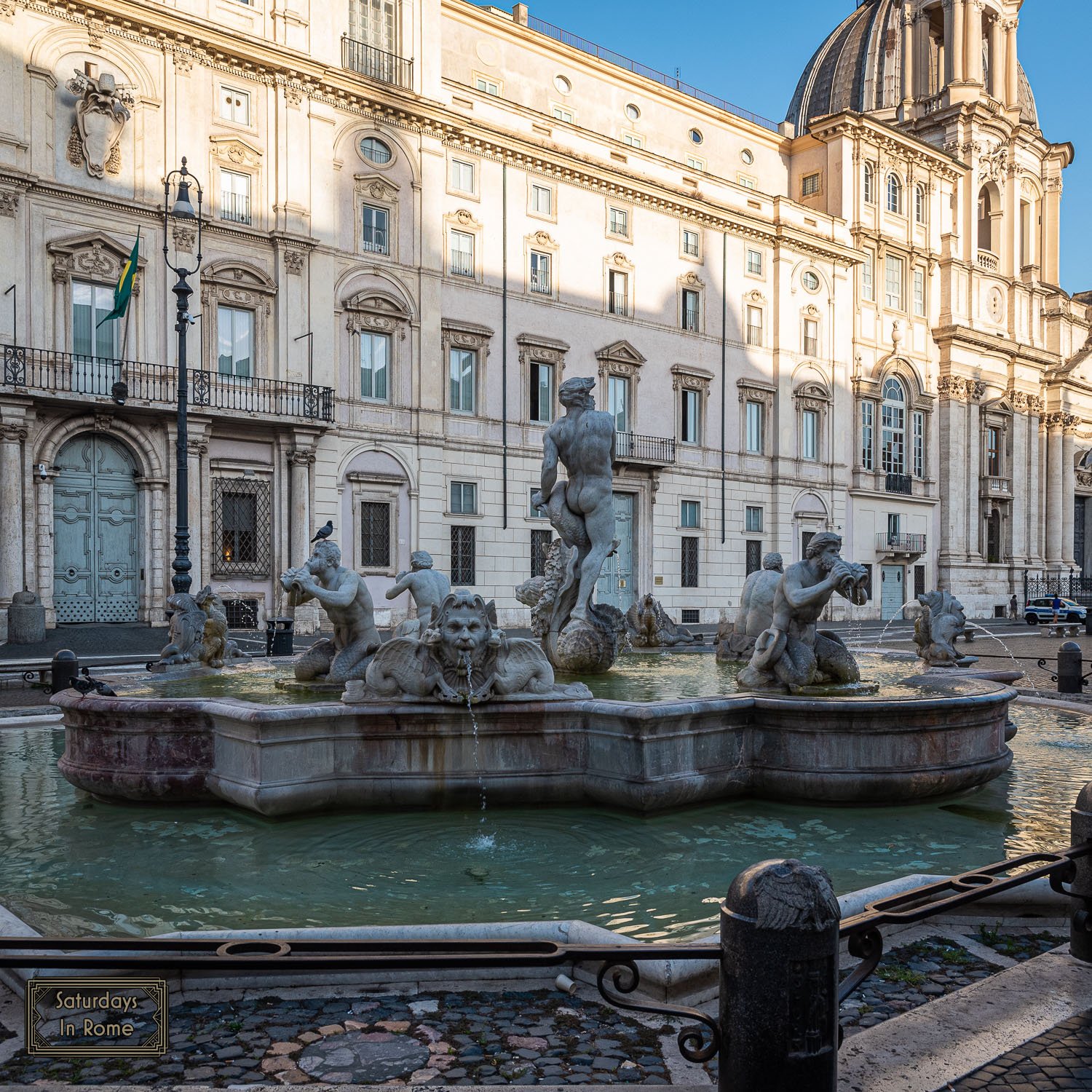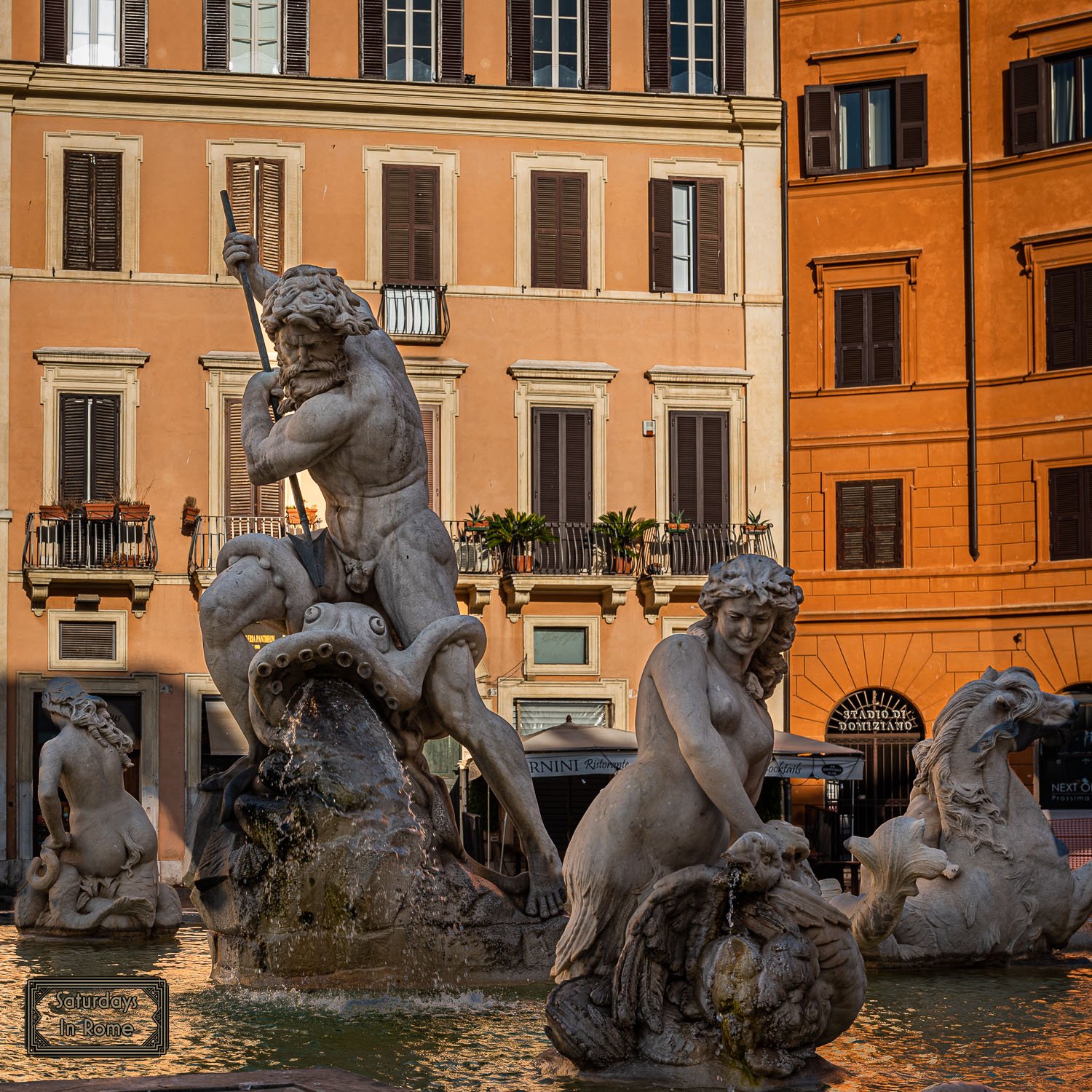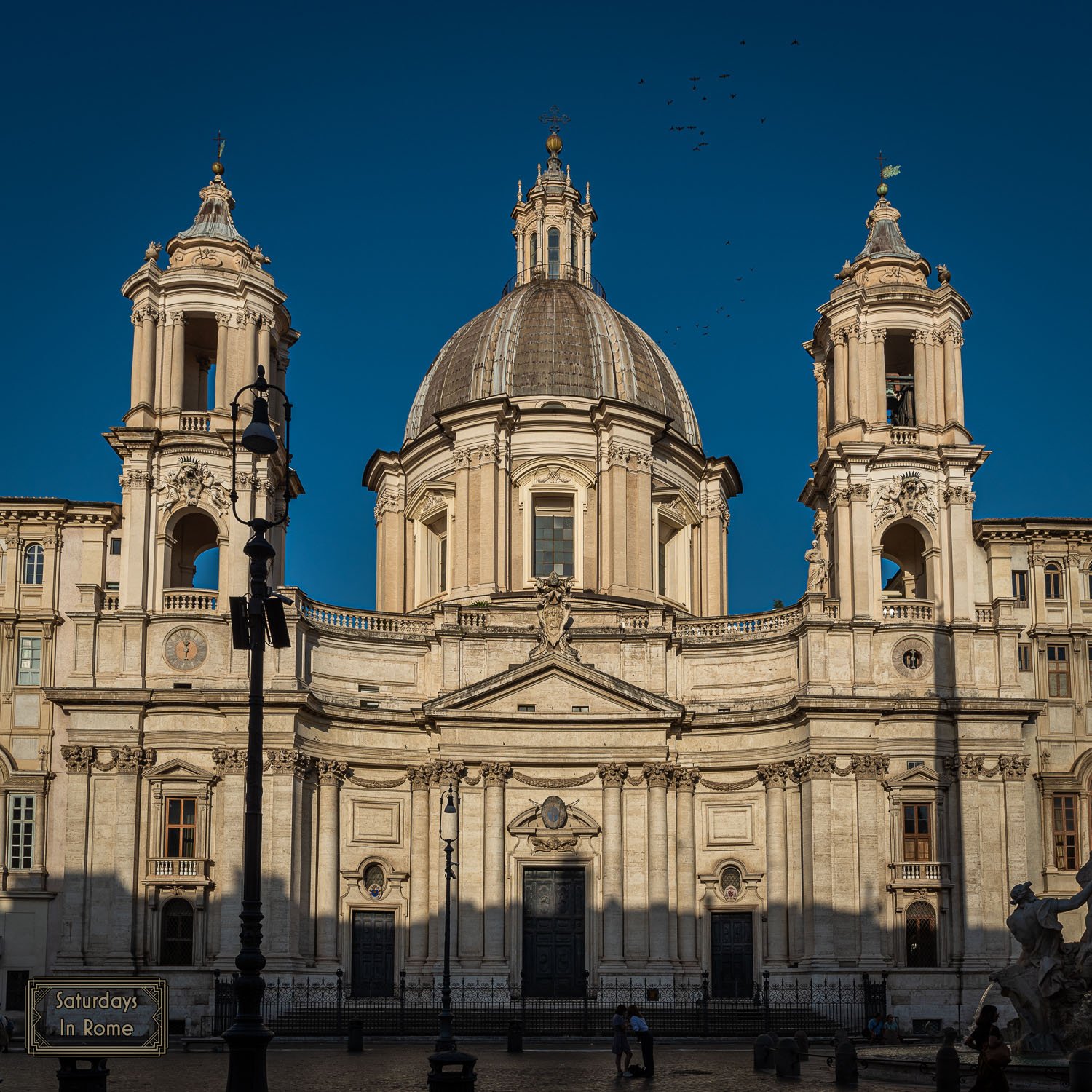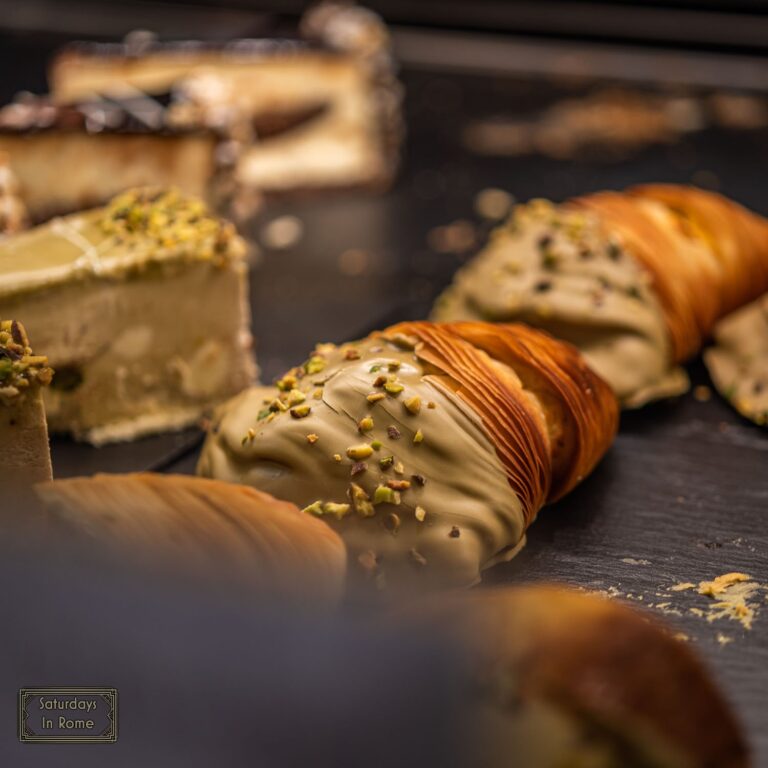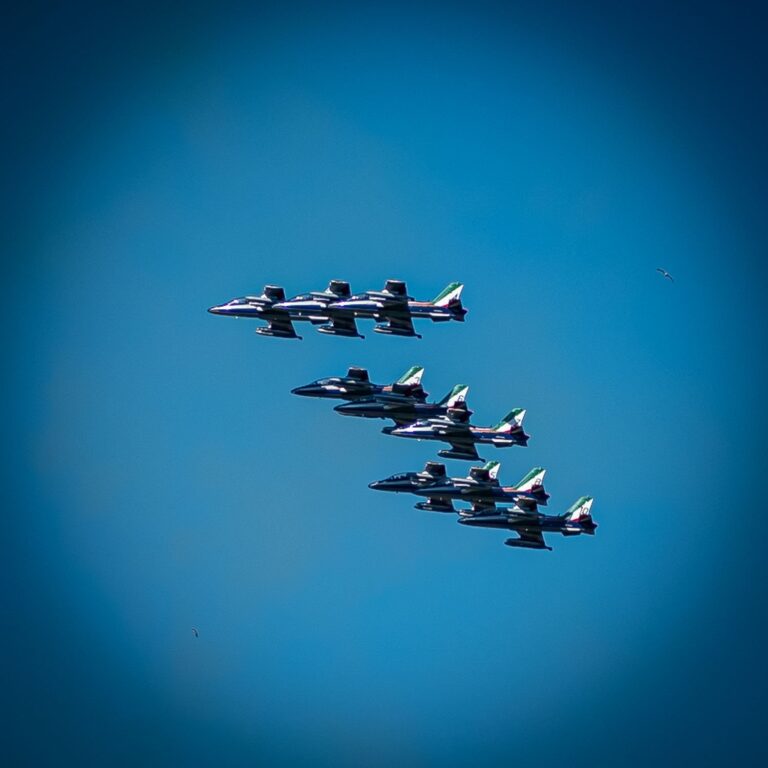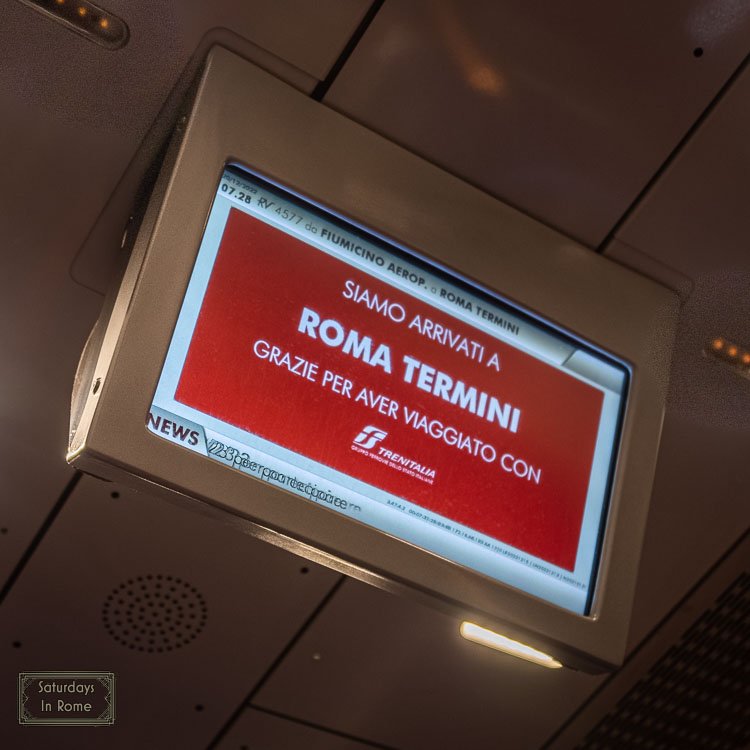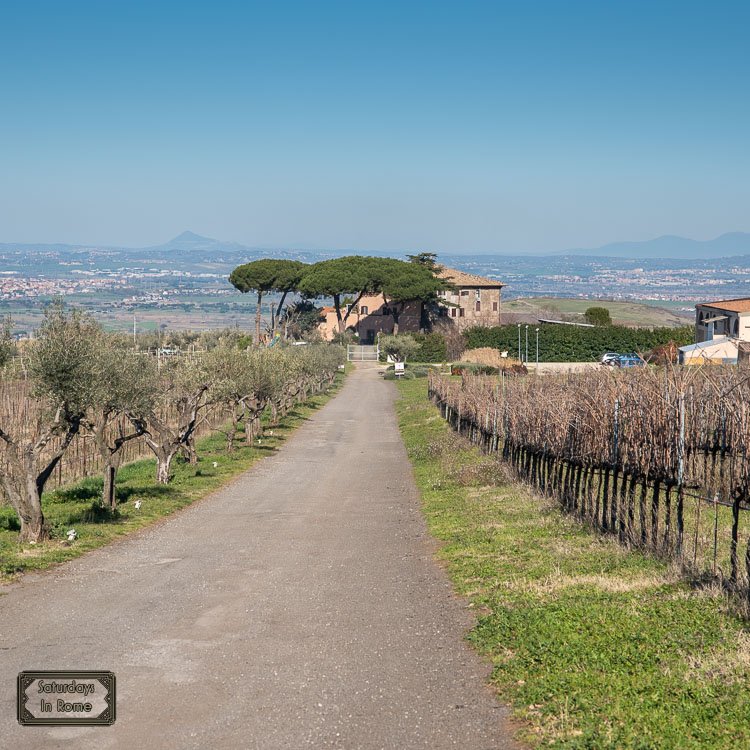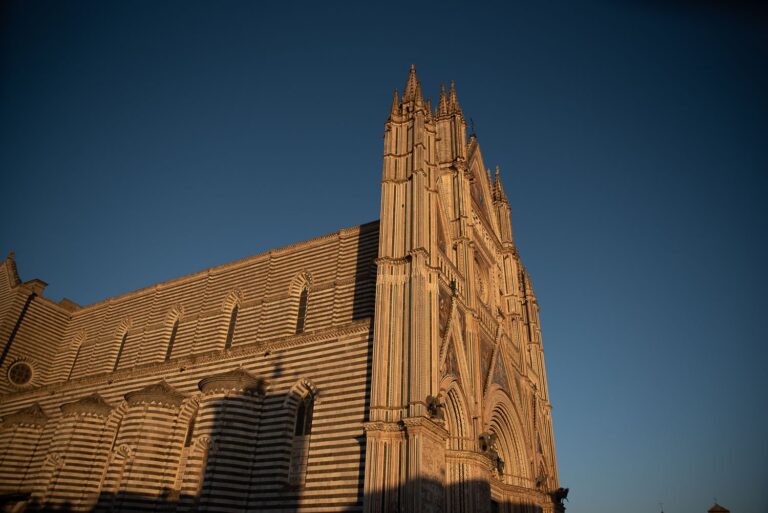Piazza Navona And The Three Beautiful Fountains In Rome
Piazza Navona is one of the most symbolic places in the Capital. The piazza is surrounded by buildings that were built on the remains of the Stadium of Domitian (Stadio di Domiziano). The long, oblong square preserves the shape and dimensions of the Stadium which started out as a horse racetrack and athletic training ground when it was built around 80 AD.
The Piazza On A Quiet Morning
What you see today is a little more recent. The renovations of the pizza were performed in the 17th century as a way for the Papacy to change the subject away from scandals and towards the beautification of the public spaces in Rome. The remains of this ancient structure are located 5-6 meters below today’s street level and can still be seen under a modern building in Piazza di Tor Sanguigna and in the basement of the church of Sant’Agnese in Agone.
Need Help Planning?
- Cheap Flights: Find The Most Affordable Flights.
- Accommodations: From 1 to 5 Stars And More.
- Car Rentals: Affordable Travel Across Italy.
- Sightseeing Tours: Explore Some Amazing Tours.
- Buying An eSIM: Stay Connected In Italy.
This post includes affiliate links.
You might be wondering: Why is Piazza Navona called that? The modern name of the square derives from the term Agones which in Latin means precisely “Games”.
What Is In Piazza Navona?
There are many things to see in Piazza Navona. In addition to the three beautiful fountains, there is also Palazzo Pamphilj, which now contains the Brazilian Embassy, and the Church of Sant’Agnese, built by Francesco Borromini, another of Rome’s great Baroque architects.
Palazzo Pamphilj
Palazzo Pamphilj, built in 1630, is an Italian noble palace located in Piazza Navona. It was built in Baroque style around the middle of the 17th century by the Pamphilj family. In modern times it is used not only as a private residence of the family, but also as the embassy of Brazil to the Italian state since 1920.
Home To The Brazilian Embassy in Rome
The Pamphilj family was powerful and as I am seeing repeated around Rome, powerful families frequently have offspring that eventually become the Pope and you will find architecture and fountains with the Pope’s family name, as with Palazzo Pamphilj. When Giovanni Battista Pamphilj became pope in 1644 and took the name of Innocenzo X, the Pamphilj family believed that the building was not sufficient for the new prestige and began a new and more impressive construction.
Piazza Navona And The Church of Sant’Agnese Iin Agone
The Church of Sant’Agnese in Agone (La chiesa di Sant’Agnese in Agone) is a Catholic house of worship. It is dedicated to Saint Agnes in the place where, according to legend, she suffered martyrdom.
Details of The Church of Sant’Agnese in Agone
The church was originally designed in 1652 by Girolamo Rainaldi in the Baroque style. It was supposed to be used as a type of private chapel attached to Palazzo Pamphilj, which is right next door. A year after the original design, Francesco Borromini partially changed the original project by devising a concave facade in order to give more prominence to the dome. In 1672 the construction was completed by Carlo Rainaldi, the son of the original designer, Girolamo.
The Three Fountains Of Piazza Navona
In addition to the wonderful structures that surround the piazza, you can also admire the three monumental fountains in the square: the Fountain of the Four Rivers, the Fountain of Neptune and the Fontana del Moro.
The Fountain of the Moor (Fontana del Moro) is the first of three monumental fountains in Piazza Navona. It was built by adding to a multi-lobed basin by Giacomo della Porta, based on a project by Gian Lorenzo Bernini.
The Fountain of the Moor’s Backside
It was completed in 1654 by Giovanni Antonio Mari and financed by Olimpia Maidalchini, the sister-in-law of the Pope and someone who will come up again a little later. The fountain was so named for the figure of the man fighting a dolphin. The features of the figure are believed to vaguely recall the characteristics of a black man and it was for this reason that the statue was first called the Ethiopian (dell’Etiope) and then the Moor (del Moro), a name that was finally extended to the entire fountain.
The Fountain Of Neptune
The Fountain of Neptune (La fontana del Nettuno) is located at the northern end of Piazza Navona.
Neptune Fighting An Octopus
It was also known as the fountain of the Calderai because it is near the ancient, small street occupied by blacksmith shops (vicolo dei Calderari) and sellers of pans, pots and metal dishes in general.
The basin, built by Giacomo della Porta, dates back to 1575-76, while the sculptures that decorate it were placed there only in 1878, by the sculptors Antonio Della Bitta and Gregorio Zappalà. It took its current name following the addition of the two sculptural groups, Nereids with cherubs and sea horses by Zappalà and Neptune fighting an octopus by Della Bitta, which took place following a public competition held by the Municipality of Rome in 1873.
The Fountain Of The Four Rivers
This Fountain of the Four Rivers (Fontana dei Quattro Fiumi) was designed by the sculptor and architect Gian Lorenzo Bernini and built by a team of sculptors. There was a competition to build the fountain, won by Gian Lorenzo Bernini, who obtained the assignment by creating a silver scale model, about 5 feet high, and gave it to Olimpia Maidalchini, the Pope’s sister-in-law and a figure of great influence in papal Rome.
The cost for the construction of the fountain was so high that, in order to finance it, the Pope put a tax on bread and at the same time made the standard size of a loaf smaller. This unleashed the hatred of the people of Rome on the sister-in-law who was held indirectly responsible for the abuse and who was already disliked by the Romans.
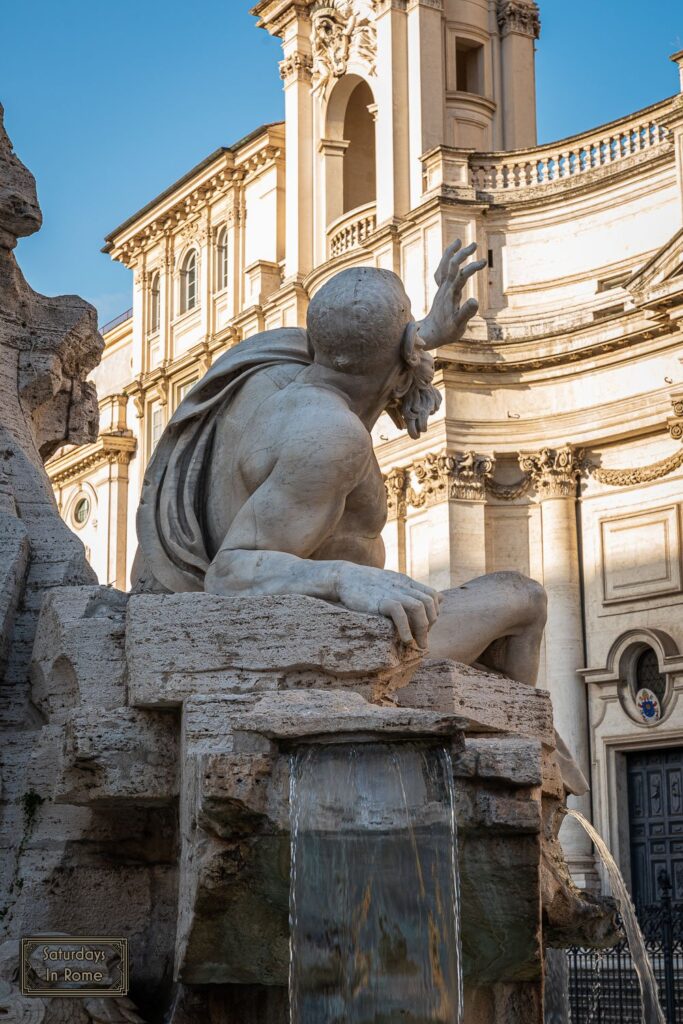
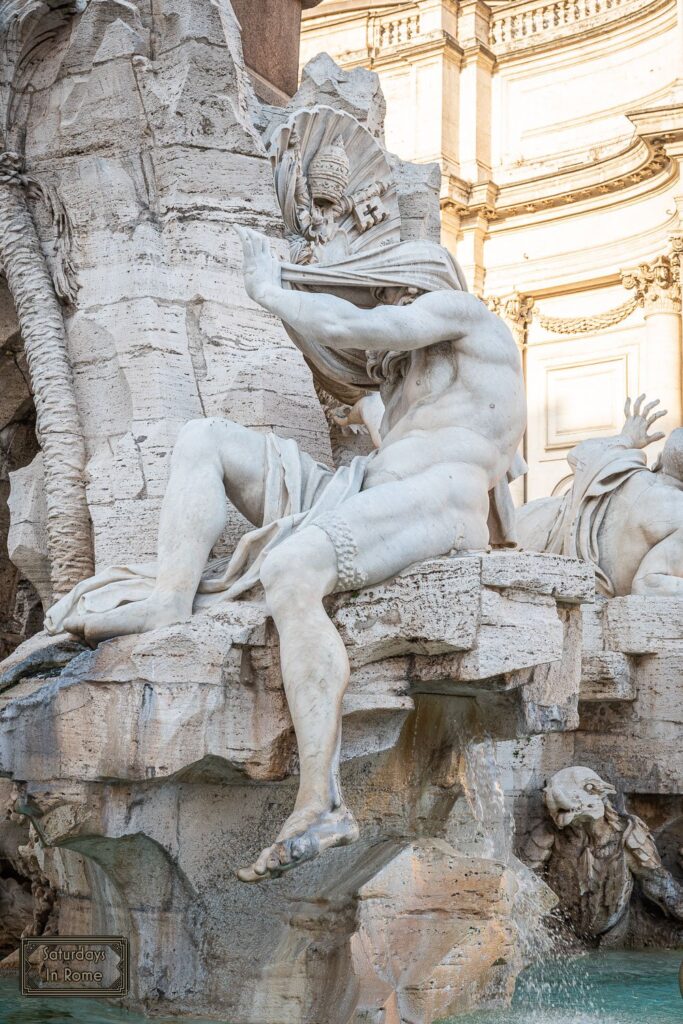
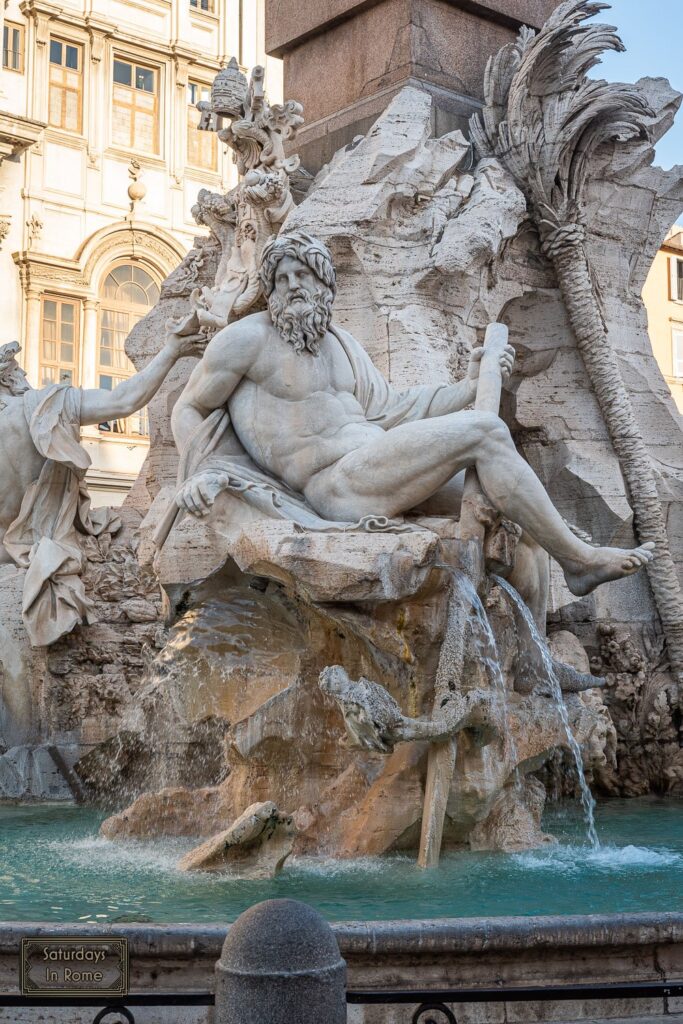
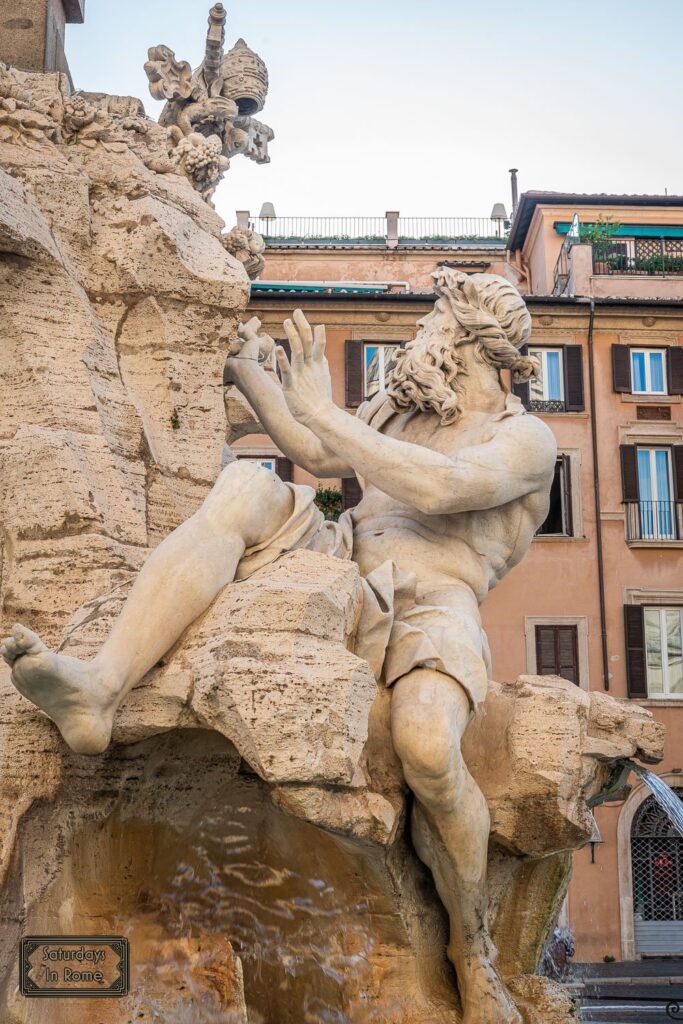
On the corners of the fountain are the monumental marble statues of the four rivers that represent the continents then known:
- The Danube representing Europe
- The Ganges representing Asia
- The Nile representing Africa
- And finally the Rio della Plata for the Americas
On the top of the cliff are two large marble coats of arms of the pope’s family with a dove carrying an olive branch in its beak, and the same dove, in bronze, is placed at the top of the obelisk.
Swimming In Piazza Navona
It is well known that you should never swim in any of the fountains in Rome, or anywhere in Italy. That is why I was surprised to learn about a small part of the history of Piazza Navona. It was famous for the water games that took place there, particularly in the summer months which, for hygienic reasons, were abolished by Pius IX in 1866.
On Saturday evenings in August, the large drainage gutter (chiavicone), then located at the source of the Fountain of the Moor, was closed and the concave part of the vast square was flooded in just two hours. The flooding lasted until one in the morning of the following Sunday, and was repeated every Saturday for the whole month. This history is amazing when you think about the size of the fines that you will earn should you choose to jump into a fountain.
How To Get To Piazza Navona
If you are in the center of the city, like near an amazing visit inside the Pantheon or Largo di Torre Argentina, you can easily walk to Piazza Navona. There is no convenient Subway stop nearby, but there are some very convenient buses to consider, like: #30, #70, #81 and #87.
There is no entrance fee to walk around the piazza, but there are guided tours available that either focus on Piazza Navona or include it as part of a larger tour.
The Church of Sant’Agnese in Agone
Here are some other major sites around Rome, Italy that might be of interest:
- The Ugly Boat and The Spanish Steps In Piazza di Spagna, Rome.
- The Spanish Steps Flowers Are A Sure Sign Of Spring In Rome.
- The Piazza Venezia History Is Worth Knowing.
- The Villa Borghese Gardens Is A Great Spot To Run And Relax.
- Bernini’s Angels Are A Challenge To Find But It’s Worth It.
- The Ponte Sant’Angelo Statues Line A Beautiful Bridge.
- The State Of The Christmas Market in Piazza Navona In Rome.
- The Vittoriano Monument In Rome – Your Questions Answered.
- These Famous Rome Statues Are Talked To With Complaints.
- The Most Beautiful Places In Rome, Italy.
- The Best Films For Italy Lovers.
- These Famous Fountains In Rome Are Definitely My Favorites.
- The Largo di Torre Argentina Exhibit Is More Up Close.
I hope you enjoyed this description of Piazza Navona and please sign up for our newsletter.

